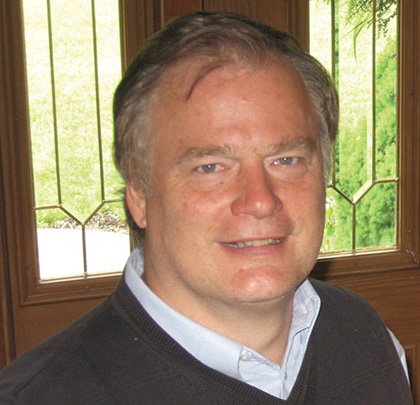Centrisys Corporation has a leading reputation in the service and repair of decanter centrifuges across a range of industries. After establishing their brand in America, Centrisys dewatering systems can today be found in all corners of the world—from Canada to Russia, from China to Italy, from Switzerland to Dubai, and all points in between. Robert Havrin, their director of technology, spoke with Modern Pumping Today about the changing nature of global competition.
Modern Pumping Today: Centrisys decanter centrifuges and dewatering systems are manufactured in the United States but used around the globe. How did expanding to the global market change your approach to manufacturing and design?
Robert Havrin: Centrisys has and will continue to work in partnership with local vendors for manufacturing equipment and systems for the U.S. market. Currently, over 60 percent of our purchased goods and services are derived from the Wisconsin area (including Chicago). This is no accident. The region boasts some of the best manufacturing skill sets in the world especially for critical elements of our designs. These companies understand the importance of remaining competitive in a global market especially since much of the U.S. manufacturing base has relocated to lower cost, lower quality operations overseas. This is in contrast to some of our competitors who import key components from China and India and assemble centrifuges in “screw driver” factories across the United States.
Around the world we now have overseas manufacturing capabilities and how we manufacture depends on capabilities of that region. More of the peripheral components of the skids such as pumps, grinders, conveyers, etc have international distributers and these are handled at those localities. Non-essential components of the design such as hoppers, casing, base and control panel are more practical to fabricate in another country due to transportation costs and various local electrical codes. However, the critical designs derived from core competencies remain in-house.
MPT: Centrisys has an impressive footprint in municipal operations, whose budgets necessitate doing more with less while greater regulatory concerns increase design challenges. How does your team work their way through these competing interests?
Robert Havrin: Two things, unsurpassed knowledge of the product and market. Centrisys started as a service organization repairing other competitive centrifuge equipment. This unique perspective enabled us to see how effectively these designs worked and what their problems were. Typically, competitors offered designs from other industries modified to function for the municipal market. This was not necessarily the best fit. The end result of this pathway was the evolution of a Centrisys design specific to the U.S. municipal market. The designs are ingeniously simple, robust, designed to do the job and relatively easy to work on.
Our knowledge of centrifuge technology for the municipal market is unsurpassed. Core competencies within the organization include engineering personnel who shape the technology in the industry over the last thirty years. Thus, while Centrisys has not been around as long as our competitors, our core competencies are second to none. Finally, and perhaps most important, the designs reflect the values and of the owner and CEO; and, the appreciation we have for the industry/customers who stood by us when we were just starting out. Every manufacturer makes mistakes; however, the consensus in industry is that Centrisys is better at standing by their product.
MPT: Centrisys boasts over 1000 centrifuges installed in industrial facilities around the world used in dewatering/separation systems. With that background, what have you learned about efficient installation procedures? How can plant managers be better prepared for new system installs?
Robert Havrin: Installing centrifuges as a stand-alone system has nearly disappeared with the emergence and evolution of computer technology. Today a typical installation consists of a dewatering system integrating the centrifuge, pumps, polymer system, cake discharge conveyers, and so on through a control panel via software with all operational parameters, safety protocols and even optional remote monitoring capabilities. Further, pilot testing is encouraged and potential end users are given a chance to test drive the equipment system before purchase. Plant managers therefore have the opportunity to assign operators and maintenance personnel to review the existing set-up, ask questions and even customize a final design more ideally suited to their needs. The final design can therefore be one that is user friendly and nearly “plug and play.”
MPT: Centrisys partners with a diverse roster in the chemical industry. How do you successfully walk the balance between so-called niche applications while maintaining your overall standards for quality control?
Robert Havrin: Obviously, the markets most compatible with our standard offering are emphasized. This requires only minor changes to our equipment and approach. However, there is also a need to change focus and move quickly as significant new commercial opportunities becomes available. For example, the centrifuge industry has been in turmoil. A senior executive once said of the centrifuge industry, “everyone is going out of business and the last company standing wins.” When a centrifuge manufacturer drops out or is taken over, service to niche markets is disrupted. Thus, the ability to quickly step in and satisfy a market need allows for opportunity. This can include the repair of equipment as well as the design of new products. Under such scenarios, value added features are integrated into the basic design while maintaining the overall standards of quality. ■
_________________________________________________________________________
MODERN PUMPING TODAY, June 2013
Did you enjoy this article?
Subscribe to the FREE Digital Edition of Modern Pumping Today Magazine!
![]()


